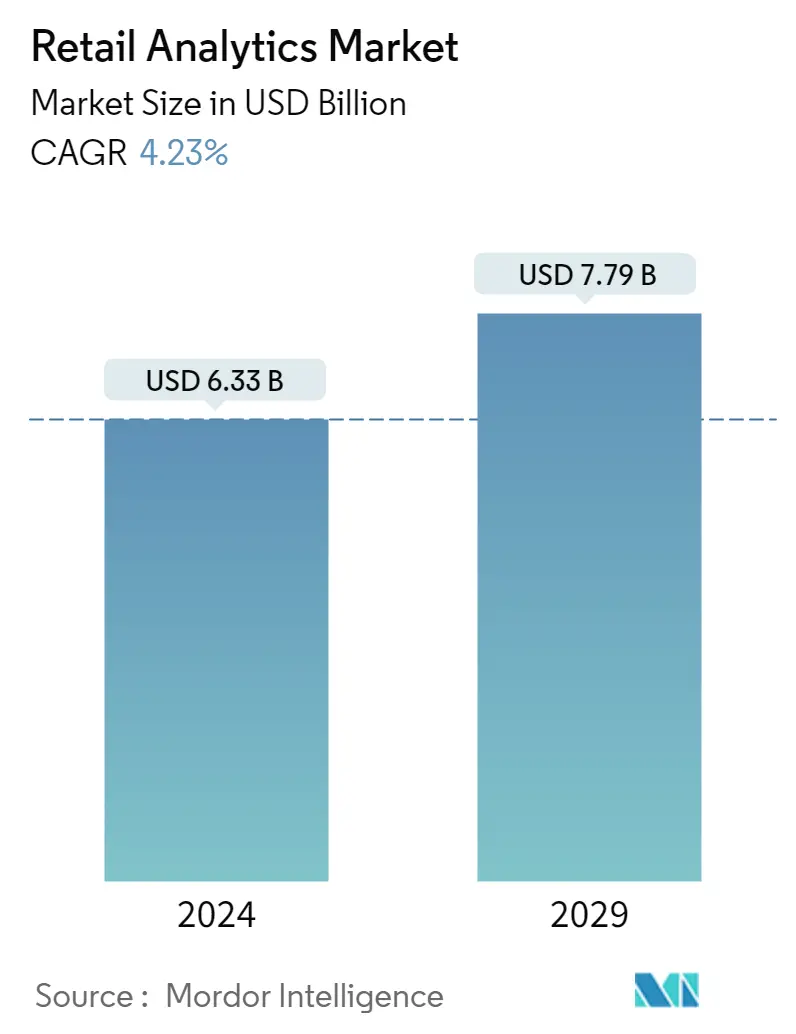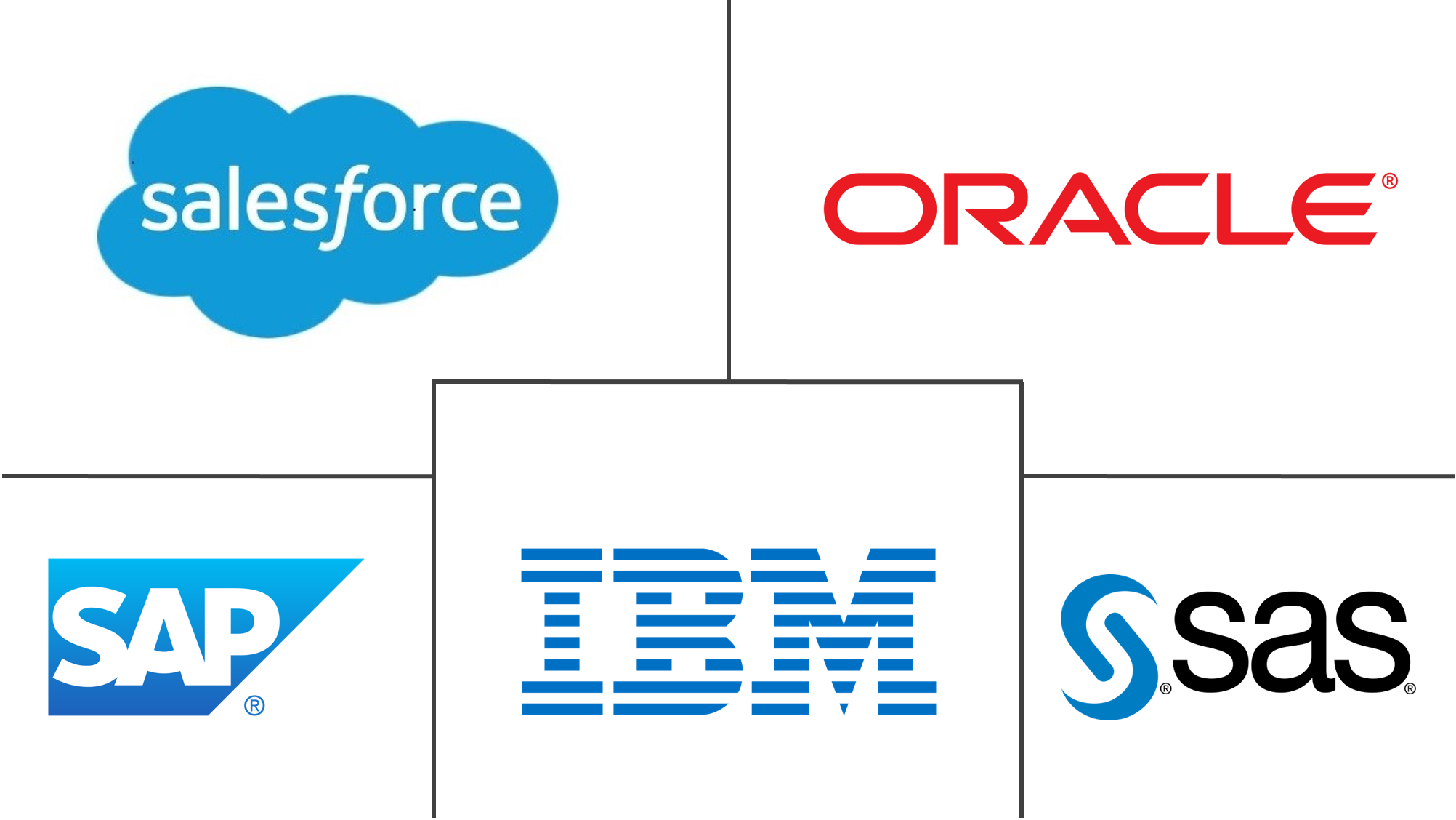Market Size of Retail Analytics Industry

| Study Period | 2019 - 2029 |
| Market Size (2024) | USD 6.33 Billion |
| Market Size (2029) | USD 7.79 Billion |
| CAGR (2024 - 2029) | 4.23 % |
| Fastest Growing Market | North America |
| Largest Market | Europe |
Major Players
*Disclaimer: Major Players sorted in no particular order |
Need a report that reflects how COVID-19 has impacted this market and its growth?
Retail Analytics Market Analysis
The Retail Analytics Market size is estimated at USD 6.33 billion in 2024, and is expected to reach USD 7.79 billion by 2029, growing at a CAGR of 4.23% during the forecast period (2024-2029).
Retail data analytics follows analyzing historical data to enable smarter decisions, improve operations, and increase sales. Both end-user data and back-end processes, such as supply chain and inventory management, have been primary sources for data analytics.
- Business Intelligence and Analytics systems have been integrated with back-end applications to understand better shoppers' behavior to facilitate consistent customer conversation. The omnichannel strategies being adopted led analytics to cater to multiple channels by consolidating disparate data sources and communicating with customers on their preferred channel. A further step towards intense personalization has strengthened the typical customer Lifetime Value and touchpoints. Therefore, current retailers have been more inclined to collect and analyze data like Location, Social sentiment, Clickstream, etc.
- Digitalization to improve consumer experience and retail operations by obtaining consumer behavior data is propelling the retail analytics industry forward. The major advantage of employing retail analytics is that it provides particular and meaningful data on customer behavior. When business managers understand how to estimate financial returns, it makes managing any area of a firm much easier, and retail analytics gives information that businesses use to make choices. Retail analytics give merchants with a clear picture of the business, from analyzing social media comments to understanding a campaign's effects on store conversion rates.
- According to an IBM survey, executives estimated that COVID-19 had expedited their digitalization by 67%; moreover, the outbreak drove them to prioritize 'Improve operational efficiency' as its top priority by 92%.
- The advent of e-commerce has rendered traditional growth avenues across brick-and-mortar store expansions as outdated. Online platforms, localized assortments, and international market expansions have transformed the way merchandising analytics is approached. Significant competition from the online platforms led retailers to enter that space and offered a clearer picture of assortment, pricing, promotions, sourcing, replenishment, and in-store planning and execution.
- The COVID-19 outbreak has triggered the global digitalization of retail enterprises. The pandemic forced a radical shift away from conventional retail and toward modern e-commerce strategies centered on powerful digital tools like Al and analytics. The growing popularity of online consumption habits has intensified the demand for digital innovation and disruption. Growing the use of Al to customize shopping experiences, increase customer retention, and improve sales efficiency would benefit corporate growth.
